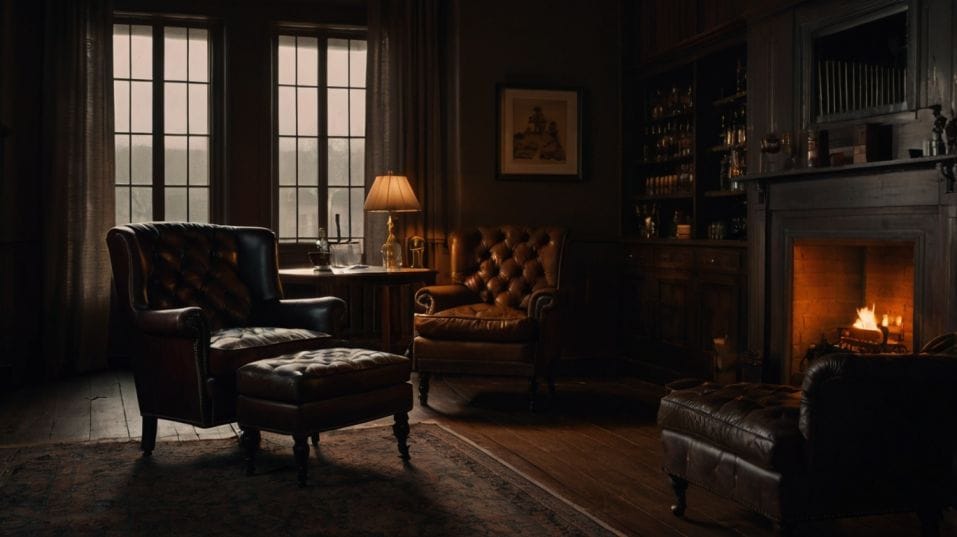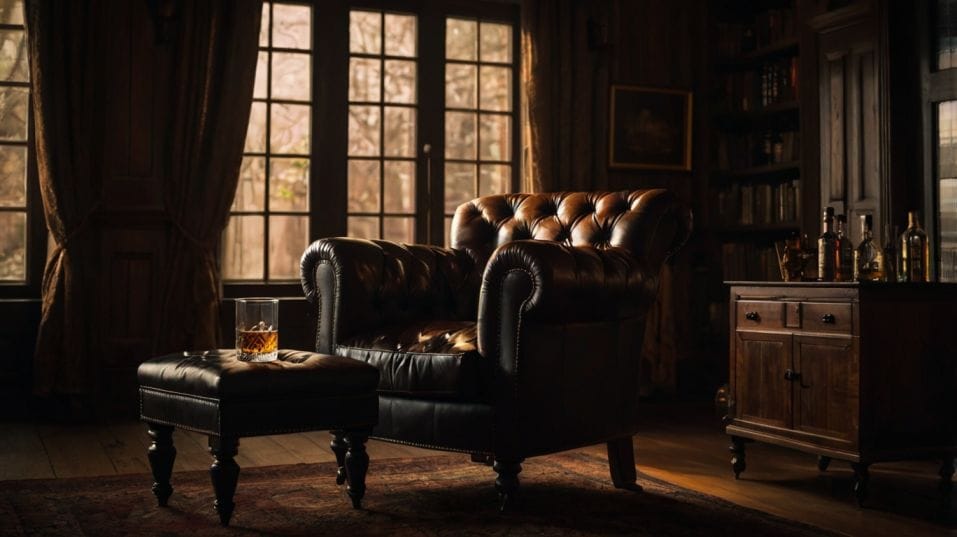Rolling Carts vs Cabinets: Bar Setup Tips
Rolling cart or whiskey cabinet? Discover which setup helps you taste smarter, build your palate, and grow your collection with confidence.

What if your whiskey setup could actually make you a better taster? If you're early in your whiskey journey, it's not just about looks. It's about creating a space that helps you explore, learn, and enjoy every pour.
The cart vs. cabinet debate isn’t just storage talk—it’s your first real decision as a collector. Let’s break down which setup fits your style, your space, and the way you want to grow.
Rolling Carts: Mobility, Focus, and Minimalism
Let’s start with the cart. It’s not just a Pinterest prop—it’s a sharp tool when used right. Think of it like a mobile command center for your whiskey life.
The bottles you’re drinking. The glasses that bring out flavor. The dropper, the journal, the reference book you go to when you’re wondering why that rye hits so differently tonight.
The best thing about a cart is the mindset it encourages: intentional minimalism. You only have so much space, and that forces you to make decisions.
Which bottles stay within arm’s reach? Which ones actually get opened? Which ones are just collecting dust because you bought into hype instead of flavor?
A cart keeps your bar active, not passive. It’s easy to rotate out bottles you’re done exploring. Easy to group whiskeys by region, grain, or finish so you can taste in meaningful clusters. Want to compare wheated bourbons side by side?
Load them up. Curious about young vs. aged single malts? Stack the lineup. You're not locked in—you're tuning your selection based on what you're trying to learn.
Carts also kill excuses. You want to taste outside the kitchen or dining room? Roll it to the couch. Got friends over? Park it by the record player. Shooting tasting notes solo on a slow Sunday? Set up by the window, pour, write, repeat.

The Risk of Clutter
But carts also have a dark side: clutter and chaos. If you’re just buying bottles to fill space, or if you’re not drinking what you collect, the cart quickly turns into a whiskey landfill. It stops being a tool and becomes a junk drawer with wheels.
The fix? Use your cart like a tasting bench. No more than a dozen bottles. Rotate regularly. Keep your glassware clean and consistent—tulips or copitas if you’re serious.
And don’t skip the non-flashy stuff: pipette, notebook, filtered water, maybe even a small coaster set if you’re sharing pours.
Cabinets: Structure, Storage, and the Long Game
Carts may be nimble, but cabinets are deep. A dedicated whiskey cabinet gives you space to build a real collection—one that evolves, teaches, and reflects your journey. It’s not about hoarding. It’s about building a library of flavor.
Cabinets let you organize in layers. You can group by style, by country, by distillery. You can track how one distillery’s output shifts across years.
You can build verticals, plan blind tastings, or line up six different cask finishes to really hammer out your palate.
Temperature and light control are better in cabinets too—especially if they’re closed or in a cooler part of your home.
Whiskey doesn’t need wine-cellar levels of precision, but avoiding sunlight, heat, and sudden swings is key if you're holding bottles for the long haul.
Cabinets also create a sense of ceremony. Opening a bottle from the cabinet feels deliberate. It slows you down. It reminds you that whiskey isn’t about the next pour—it’s about this pour, right now.
Don’t Let It Become a Museum
But here’s where cabinets fall short: they can make you lazy. It’s easy to let bottles sit unopened. To forget what you already have.
To keep buying more just because you have the space. Before long, your cabinet is full of unopened bottles you don’t remember buying, and your tasting habits stagnate.
To fight that, treat your cabinet like a working archive. Light it well. Keep labels visible. Create a tasting log or app-based inventory so you don’t forget what’s inside.
Better yet, pull bottles from your cabinet into your cart every month. Use the cabinet to store and organize. Use the cart to engage and experiment.
Design Isn’t Everything—But Function Is
Whatever you choose—cart, cabinet, or both—don’t let aesthetics lead. Yes, a brass-trimmed cart looks sharp. A glass-front cabinet is classy. But the real flex is a setup that helps you taste smarter and collect with confidence.
Ask yourself:
- Can I find what I’m looking for in less than 10 seconds?
- Are my most important bottles easy to access and pour?
- Does this setup make me want to taste more intentionally?
Form follows function. Want your collection to look better? Start by using it more. Organize by what you actually drink, not what gets the most likes. Make your space about flavor—not showmanship.
Hybrid Setups: Build for Now and for Later
Most serious whiskey drinkers eventually build both: a cart for what’s active, and a cabinet for what’s aging, waiting, or on deck.
The cart becomes your workbench. The cabinet becomes your cellar. Together, they turn your whiskey hobby into a system.
That’s when collecting gets fun. You’re not just buying bottles because they’re new or rare. You’re buying with purpose. You’re tasting against reference points.
You’re developing your palate—and remembering what you learned last month, not just what you opened yesterday.
Hybrid setups also help with pacing. It’s easy to overload a cart or forget about your cabinet. Use both to keep your attention balanced.
Curious about peated scotch? Build a mini-focus cart. Then cycle back to bourbon or grain whiskies next month. You’re not chasing trends—you’re building range.
Final Thoughts
Your whiskey bar is more than a display. It’s your training ground. It shapes how you taste, how you think, and how much you actually enjoy what you drink.
A rolling cart helps you stay lean, mobile, and focused. A cabinet gives you structure, depth, and patience. The smartest setups combine both.
So don’t overthink it—just start building. Pull five bottles you’re curious about. Set them up where you’ll actually use them. Taste side by side. Take notes. Pour for someone else. Notice what surprises you. Learn your palate.
Whether you roll, stash, or split the difference—start making your bar work for you. Today.




